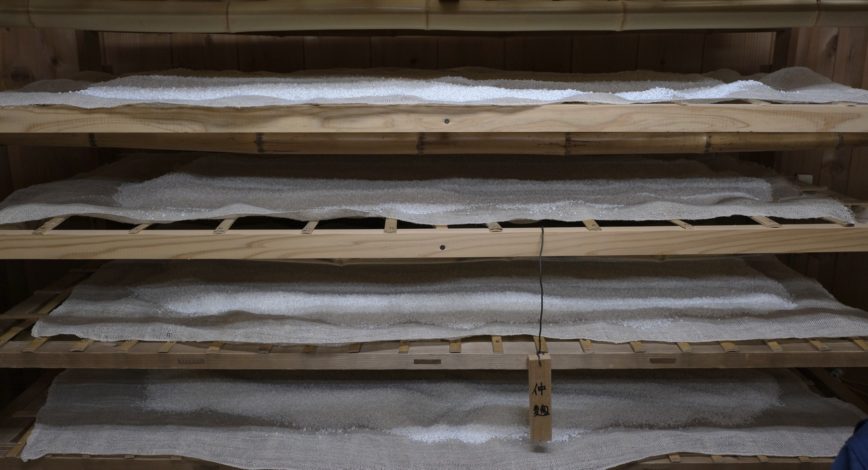
Brewing process
As sake is made of rice, which is a grain, its brewing method is quite different to the other fermented alcohol.
The basic technique used in the brewing process is mostly the same for 100 years, but some of the process is now much efficient because of the invention of machinery and development of science.
In this section, you can find how sake is brewed in today’s world.
Polish rice
When breweries buy rice it is brown rice, so needed to polish it up.
By how much they polish rice, it change the class of the product and brewing process.
Wash polished rice
After polishing rice, it is required to wash up to remove any noise.
Water used in this process soak into rice, so the quality of water is important from this process.
After washing process, leave rice in water to let it absorb water slightly to make steam rice well.
Steam rice
Steam rice with a traditional instrument called Koshiki
By steaming rice, it optimises starch for the fermentation, balances the level of water in rice, and pasteurise for its hygiene.
Make rice koji (Seikiku process)
Koij convert starch in rice into glucose, and this process decides how the fermentation will be.
Put koji seed to seamed rice and let it develop for 50 hours.
It is quite difficult to switch to machinery, so brewers monitor the rice koji for 50 hours continuously to maintain the quality.
Make yeast mash(Shubo, Moto)
With new rice koji, it mix with steam rice, water and yeast to make Shubo or Moto which is a base of sake.
Mashing rice in the tank and develop lactic acid bacteria, which remves the noise in Shubo.
This mashing process is called Yamahoroshi and there are 3 types of Shubo.
- ・Kimoto 生酛
Traditional Shubo. Develop organic lactic acid bacteria in Shubo and use Yamaoroshi process - ・Sokujomoto 速醸酛
Add lactic acid bacteria instead of develop naturally. It is a main stream in recent sake brewing due to its efficiency. - ・Yamahaimoto 山廃酛
No Yamaoroshi process used. It takes more time, but produce more amino acid at the end.
Make moromi
Add more rice koji, water and steamed rice in Shubo and ferment it for about a month.
In this process, it is required to add them not at once, but three times separately to ferment gentle and slowly.
After this process, what we get is called Moromi.
Press and squeeze fermented moromi (Joso process)
After the fermentation period, now it is the time to squeeze out liquid from Moromi.
Traditionally this process is done by an instrument Fune, but these days breweries use squeeze machine.
For high end products, brewery do not even squeeze and collect drops by hanging sake in a bag.
Filter squeezed moromi
After squeezing process, it is required to filter to balance its aroma and avoid coloring.
Some products do not filter, so the taste is truly reflect the umami of rice, but this kind of product goes off faster.
Heat sake to pasteurise
Filtered sake is heated and pasteurise to keep the quality as long as possible.
Some products do not pasteurise. So you can taste genuine taste, but it also goes off faster.
Blend sake and add water
Before bottling, breweries blend other sake, such as previous vintage sake, to maintain taste of the brand.
To control the alcohol contents, they add some water as well.
Bottling
At the last, it is bottled to store and deliver to clients.
Nevertheless some breweries do not store in the bottle, in tank.
When they let sake rest for a bit it smoothen the sake taste and the way of resting differ by breweries.






